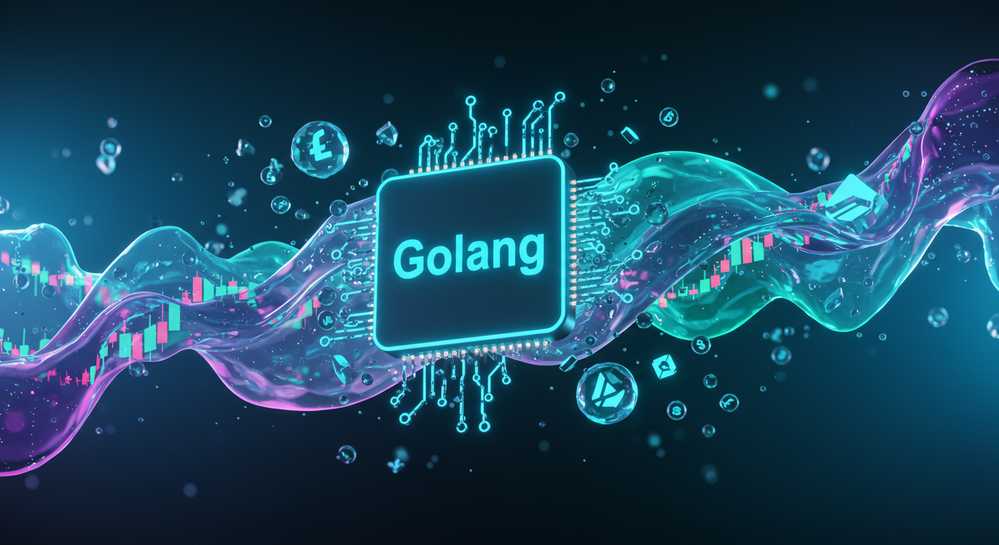Trong thế giới tiền mã hóa biến động không ngừng, khả năng phản ứng nhanh và chính xác là yếu tố then chốt. Một trading bot golang chính là công cụ không thể thiếu. Golang, với hiệu suất vượt trội và khả năng xử lý đồng thời mạnh mẽ, đang nổi lên như lựa chọn hàng đầu cho nhà phát triển muốn xây dựng hệ thống giao dịch tự động tin cậy, hiệu quả. Bài viết này sẽ đi sâu vào lý do Go lý tưởng, cách thức hoạt động, và những điều cần biết để triển khai một bot thành công.
Why Golang Excels for Trading Bots

Golang is engineered for high-performance and concurrent applications, making it ideal for advanced trading bots. It efficiently manages thousands of lightweight goroutines, ensuring market data processing and order execution without bottlenecks. This guarantees instant reactions to price fluctuations, minimizing latency and maximizing trading opportunities. Go compiles directly to machine code, eliminating runtime overhead for superior execution speed.
- Superior Performance: Go compiles to native machine code, reducing latency in data processing and order submission.
- Robust Concurrency: Goroutines and channels handle multiple tasks concurrently, monitoring pairs and managing APIs efficiently.
- Enhanced Reliability: Go’s design promotes readability, reducing errors and boosting bot stability for 24/7 trading.
- Growing Ecosystem: Libraries for financial and blockchain development in Go simplify complex integrations.
Goroutines and Channels for Trading Bot Concurrency
Goroutines are lightweight, concurrently executing functions; channels provide safe, structured communication. This combination builds sophisticated logic efficiently. It mitigates common race conditions in multi-threaded programming, ensuring data integrity for your trading bot Golang solutions.
Essential Components of a Go Trading Bot
An effective trading bot requires integrating several critical components, from market data acquisition to robust risk management. Building such a bot with Go demands meticulous attention to detail, ensuring precision and security in every transaction.
- Exchange API Connectivity: The bot must integrate with crypto exchange APIs, like Binance or Kraken, to fetch real-time price data, historical trades, and execute orders. Go’s efficient HTTP client and available SDKs streamline this crucial connection.
- Trading Strategy Module: This is the bot’s core intelligence. Algorithms, such as moving averages or RSI, are implemented here to make informed buy/sell decisions, aligning with effective crypto investment strategies.
- Order Management System: This module ensures orders are sent and executed correctly. It handles error processing, confirms order statuses, and manages various order states.
- Risk and Capital Management: Essential for safeguarding assets. It implements stop-loss, take-profit levels, and manages position sizing, crucial for long-term profitability.
Data Acquisition and Processing for Go Trading Bots
Real-time market data acquisition and processing form the foundation. A Go trading bot leverages WebSockets for streaming price data. Goroutines then rapidly process this information, calculating technical indicators and enabling timely decision-making. This speed is vital for competitive automated trading.
Building Your First Go Trading Bot: A Practical Guide

Building an effective trading bot with Go requires a structured approach for efficiency and security. This practical guide outlines essential steps for developing your first trading bot Golang solution.
- Set Up Development Environment: Install Golang, choose an IDE like VS Code with Go plugins, and establish version control using Git.
- Select Exchange and API: Identify your target crypto exchange. Research its API documentation. Use available Go client libraries or build a custom client.
- Develop Strategy Logic: Code your trading strategy. Begin with simple rules, like buying on dips, to validate basic functionality.
- Backtest and Optimize: Test your strategy rigorously with historical data. Adjust parameters to maximize potential profits and mitigate risks.
- Deploy and Monitor: After thorough testing, deploy your bot on a reliable server, such as a Virtual Private Server (VPS). Implement robust monitoring for live operations.
Security Best Practices for Trading Bots
Security is paramount for any automated trading system. Always store API keys in environment variables or a secure secret management system; never hardcode them. Utilize secure HTTPS connections and restrict your bot’s API permissions to only essential operations.
Advanced Optimizations and Future Trends

Once your Go trading bot is stable, the next crucial step involves advanced optimization and capability expansion. Go provides unique avenues to significantly enhance performance and scalability. This is vital for maintaining a competitive edge in the fast-paced crypto markets of 2025.
- Performance Optimization: Go allows fine-tuning for minimal latency. This includes efficient data structures, optimized loops, and leveraging `sync.Pool` for object reuse. Such low-level control is essential for high-frequency trading.
- Scalability: Design your trading bot Golang solution with a microservices architecture. Go excels at building small, independent services, facilitating easy module addition or removal. This ensures your bot adapts to evolving market demands.
- AI/Machine Learning Integration: Incorporate Go for simple predictive models or integrate with external AI services. This enhances the bot’s decision-making capabilities, moving towards more sophisticated, AI-driven strategies.
- Advanced Data Analysis: Apply big data analytics techniques. This uncovers complex market patterns, providing a significant competitive advantage in volatile markets.
Leveraging Cloud Infrastructure for Trading Bots
Deploying your Go trading bot on cloud platforms like AWS, Google Cloud, or Azure offers high reliability and flexible scalability. Proximity to exchange data centers further reduces network latency. This infrastructure choice is critical for optimal performance and uptime in automated trading environments.
Việc triển khai một trading bot bằng Golang không chỉ mở ra cánh cửa đến với giao dịch tự động hiệu suất cao mà còn cung cấp nền tảng vững chắc cho sự phát triển lâu dài. Với tốc độ, độ tin cậy và khả năng mở rộng của Go, bạn có thể tự tin xây dựng và vận hành các chiến lược giao dịch phức tạp một cách hiệu quả. Để khám phá thêm các công cụ và giải pháp tối ưu hóa chiến lược giao dịch của bạn, hãy truy cập Best Sniper Bots ngay hôm nay.